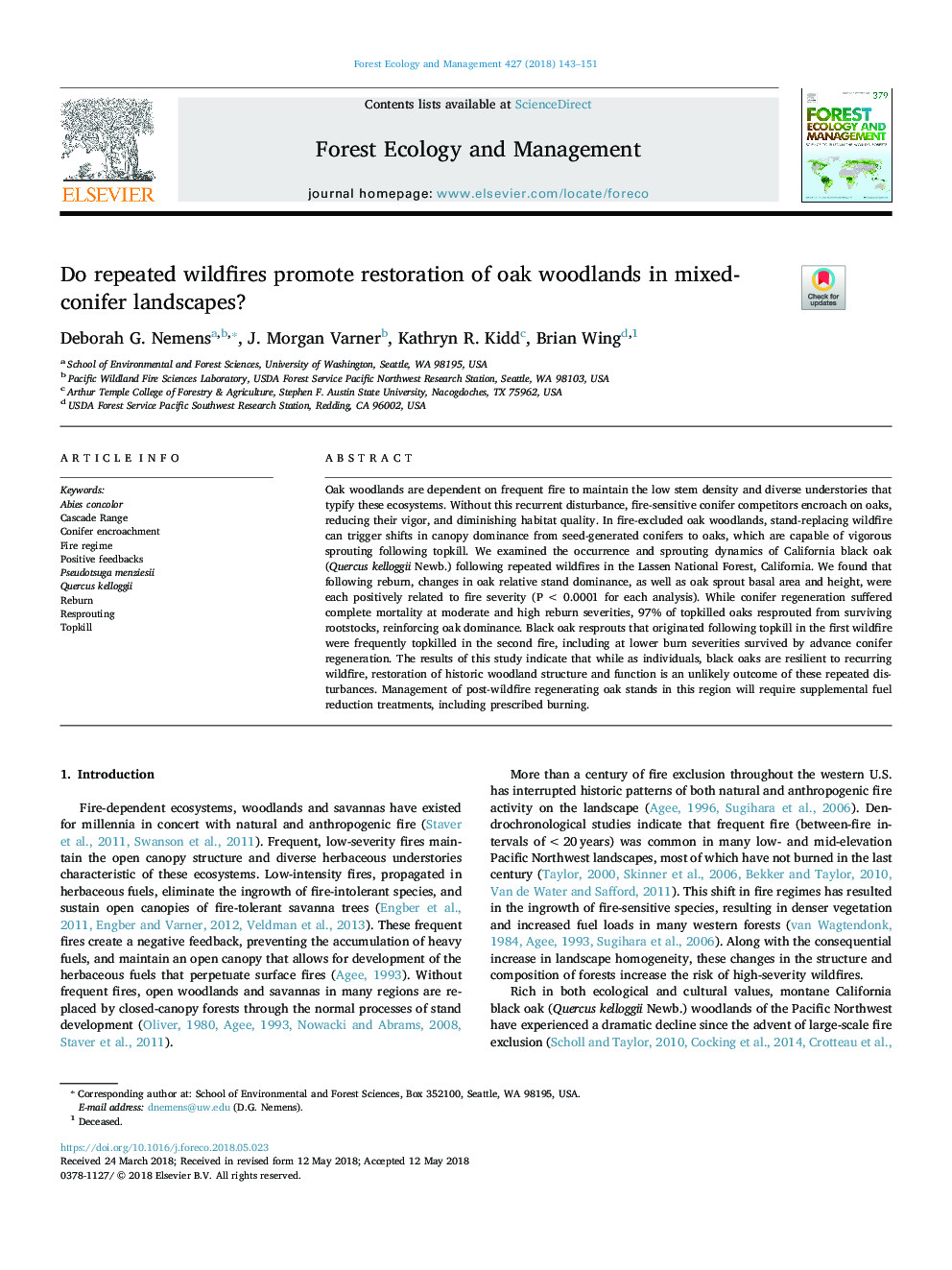| Article ID | Journal | Published Year | Pages | File Type |
|---|---|---|---|---|
| 6541504 | Forest Ecology and Management | 2018 | 9 Pages |
Abstract
Oak woodlands are dependent on frequent fire to maintain the low stem density and diverse understories that typify these ecosystems. Without this recurrent disturbance, fire-sensitive conifer competitors encroach on oaks, reducing their vigor, and diminishing habitat quality. In fire-excluded oak woodlands, stand-replacing wildfire can trigger shifts in canopy dominance from seed-generated conifers to oaks, which are capable of vigorous sprouting following topkill. We examined the occurrence and sprouting dynamics of California black oak (Quercus kelloggii Newb.) following repeated wildfires in the Lassen National Forest, California. We found that following reburn, changes in oak relative stand dominance, as well as oak sprout basal area and height, were each positively related to fire severity (Pâ¯<â¯0.0001 for each analysis). While conifer regeneration suffered complete mortality at moderate and high reburn severities, 97% of topkilled oaks resprouted from surviving rootstocks, reinforcing oak dominance. Black oak resprouts that originated following topkill in the first wildfire were frequently topkilled in the second fire, including at lower burn severities survived by advance conifer regeneration. The results of this study indicate that while as individuals, black oaks are resilient to recurring wildfire, restoration of historic woodland structure and function is an unlikely outcome of these repeated disturbances. Management of post-wildfire regenerating oak stands in this region will require supplemental fuel reduction treatments, including prescribed burning.
Keywords
Related Topics
Life Sciences
Agricultural and Biological Sciences
Ecology, Evolution, Behavior and Systematics
Authors
Deborah G. Nemens, J. Morgan Varner, Kathryn R. Kidd, Brian Wing,
